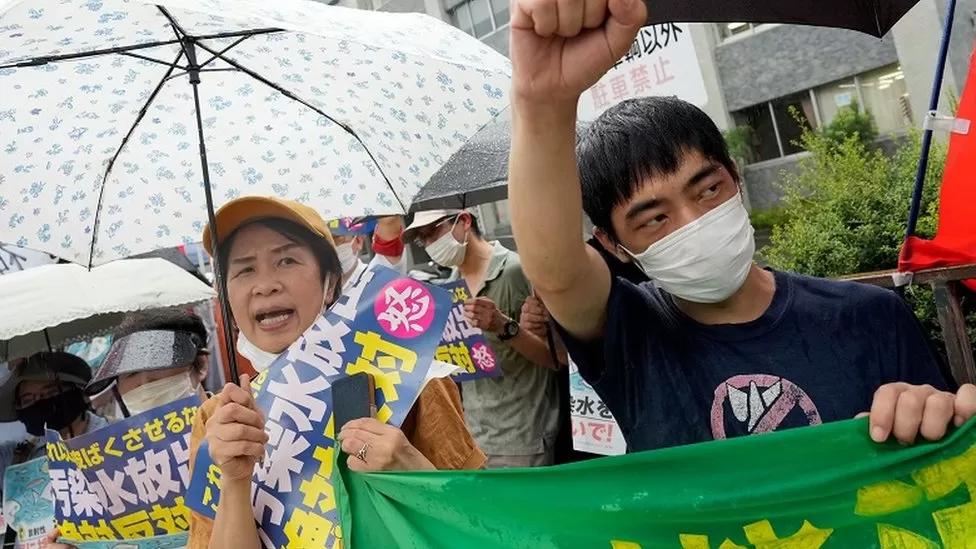

Japan will start releasing treated radioactive water from the tsunami-hit Fukushima nuclear plant into the Pacific Ocean on Thursday, despite opposition from its neighbors.
The decision comes weeks after the UN’s nuclear watchdog approved the plan.
Some 1.34 million tonnes of water – enough to fill 500 Olympic-size pools – have accumulated since the 2011 tsunami destroyed the plant.
The water will be released over 30 years after being filtered and diluted.
Authorities will request for the plant’s operator to “promptly prepare” for the disposal to start on 24 August if weather and sea conditions are appropriate, Japan’s Prime Minister Fumio Kishida said on Tuesday after a Cabinet meeting.
Mr. Kishida had visited the plant on Sunday, prompting speculation the release was imminent.
The government has said that releasing the water is a necessary step in the lengthy and costly process of decommissioning the plant, which sits on the country’s east coast, about 220km (137 miles) northeast of the capital Tokyo.
Japan has been collecting and storing the contaminated water in tanks for more than a decade, but space is running out.
In 2011, a tsunami triggered by a magnitude 9.0 earthquake flooded three reactors of the Fukushima Daiichi Nuclear Power Plant. The event is regarded as the world’s worst nuclear disaster since Chornobyl.
Shortly after, authorities set up an exclusion zone which continued to be expanded as radiation leaked from the plant, forcing more than 150,000 people to evacuate from the area.
BBC/Taiwo Akinola
Subscribe to our Telegram and YouTube Channels also join our Whatsapp Update Group